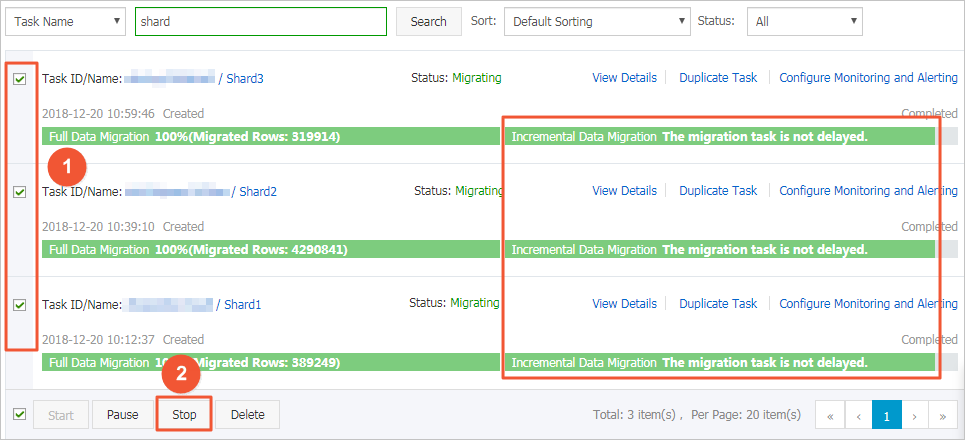Section | Setting | Description |
N/A | Task Name | The task name that DTS automatically generates. We recommend that you specify a name that indicates your business requirements for easy identification. You do not need to use a unique name. |
Source Database | Instance Type | The instance type of the source database. In this example, User-Created Database with Public IP Address is selected. Note If you select other instance types, you must deploy the network environment for the self-managed database. For more information, see Preparation overview. |
Instance Region | If you select User-Created Database with Public IP Address as the instance type, you do not need to set the Instance Region parameter. Note If a whitelist is configured for the self-managed MongoDB database, you must add the CIDR blocks of DTS servers to the whitelist. You can click Get IP Address Segment of DTS next to Instance Region to obtain the CIDR blocks of DTS servers. |
Database Type | The type of the source database. Select MongoDB. |
Hostname or IP Address | The endpoint or IP address of a shard in the self-managed MongoDB database. In this example, the public IP address of a shard is used. Note DTS migrates each shard of the source database until the whole cluster is migrated. In this example, enter the endpoint or IP address of the first shard. When you configure the second migration task, enter the endpoint or IP address of the second shard. You must repeat this procedure until all shards are migrated. |
Port Number | The service port number of the shard. Note In this example, the service port of each shard in the self-managed MongoDB database must be accessible over the Internet. |
Database Name | The name of the authentication database. The database account is created in this database. |
Database Account | The account that is used to log on to the self-managed MongoDB database. For information about the permissions that are required for the account, see the Permissions required for database accounts section of this topic. |
Database Password | The password of the database account. Note After you specify the information about the source database, you can click Test Connectivity next to Database Password to check whether the information is valid. If the information is correct, the Passed message appears. If the information is incorrect, the Failed message appears and you must click Check next to the Failed message to modify the information. |
Encryption | Specifies whether to encrypt the connection to the database. In this example, Non-encrypted is selected. Note You can select SSL-encrypted only when you migrate data from MongoDB Atlas. |
Destination Database | Instance Type | The instance type of the destination database. Select MongoDB Instance. |
Instance Region | The region in which the destination ApsaraDB for MongoDB instance resides. |
MongoDB Instance ID | The ID of the destination sharded cluster instance. |
Database Name | The name of the authentication database. The database account is created in this database. |
Database Account | The database account of the destination ApsaraDB for MongoDB instance. For information about the permissions that are required for the account, see the Permissions required for database accounts section of this topic. |
Database Password | The password of the database account. Note After you specify the information about the destination instance, you can click Test Connectivity next to Database Password to check whether the information is correct. If the information is correct, the Passed message is displayed. If the information is incorrect, the Failed message is displayed and you must click Check next to the Failed message to modify the information. |
 Elastic Compute Service (ECS)
Elastic Compute Service (ECS)
 Container Compute Service (ACS)
Container Compute Service (ACS)




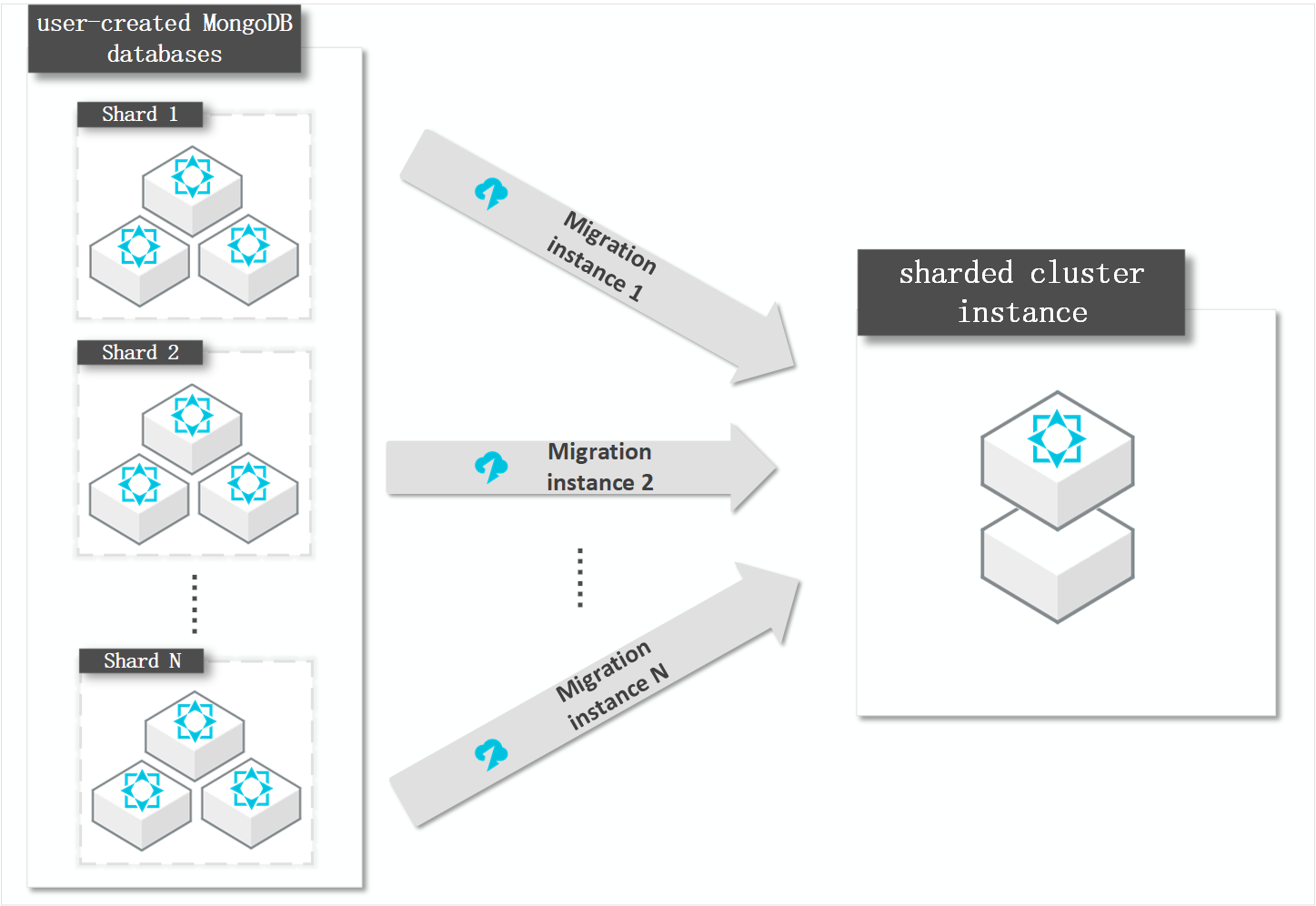
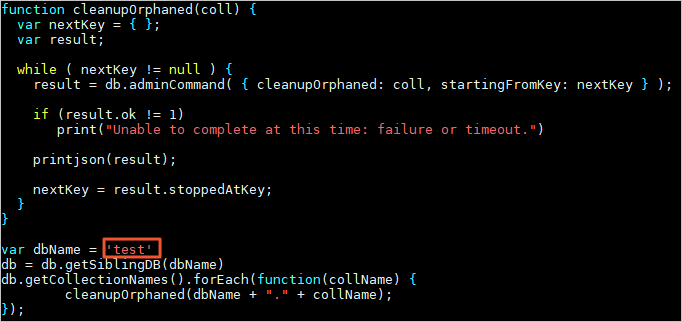
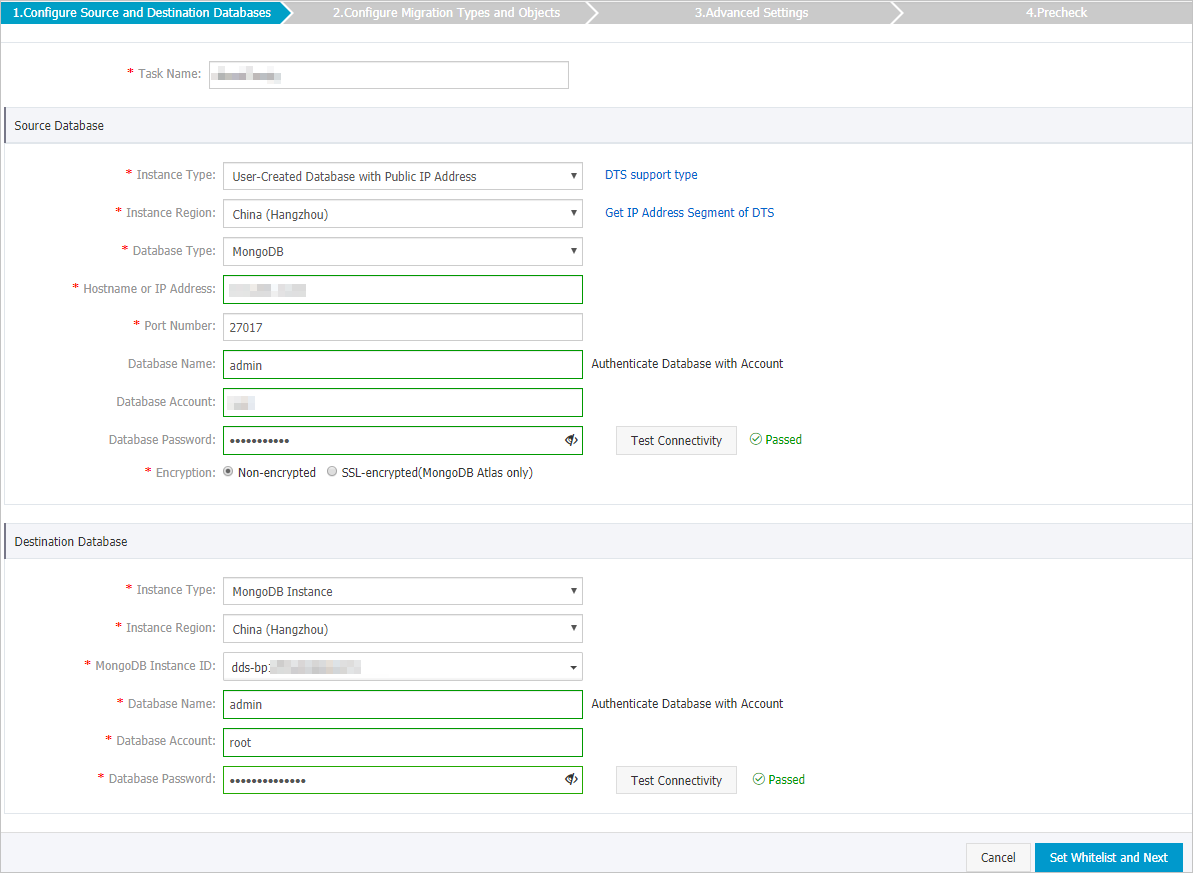
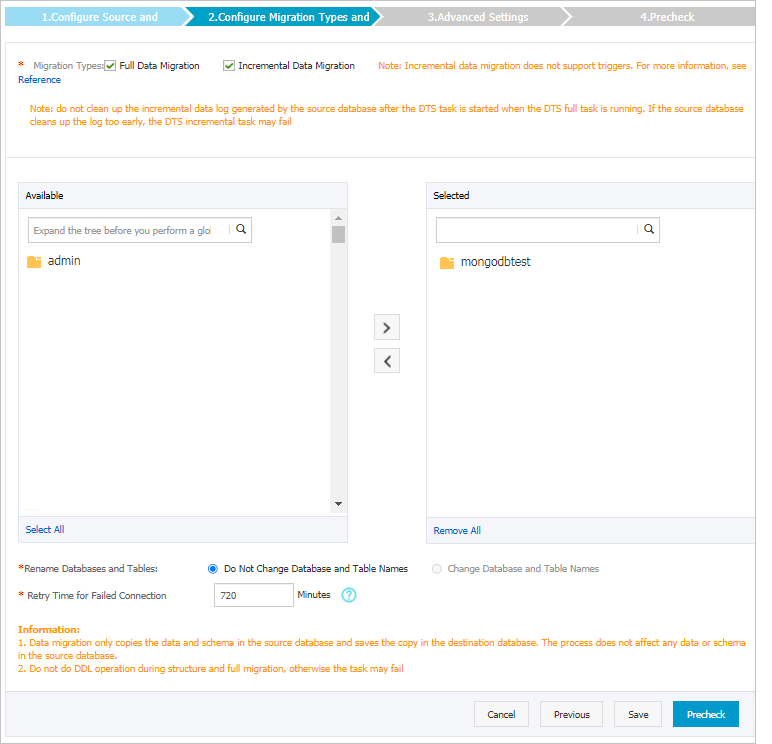
 icon and add the objects to the Selected Objects section.
icon and add the objects to the Selected Objects section.  icon next to each failed check item to view the related details. Fix the issues as instructed and run the precheck again.
icon next to each failed check item to view the related details. Fix the issues as instructed and run the precheck again.